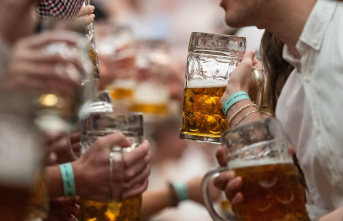In 2025, Bremen is to be connected to a national transport network for hydrogen that runs through Lower Saxony. The spokesman for the transmission system operator Gasunie Germany confirmed this when asked. Gasunie is building the Hyperlink transport system, which will also connect Germany with the neighboring countries of the Netherlands and Denmark. Today, Bremen's Economics Senator Kristina Vogt (left) is to give an overview of the hydrogen projects in the state of Bremen during a presentation of hyperlinks.
With the Hyperlink line system, hydrogen is to be transported to the customers. Industry needs hydrogen on a large scale in steel production, among other things. Hydrogen can also be used for fuel cells in cars, commercial vehicles and airplanes. Among other things, the energy source could be used in the Bremen steelworks in the future. In Lower Saxony, hyperlink is to be connected to important industrial locations such as Salzgitter (2028) and Wolfsburg (2030). A connection to the economically strong state of North Rhine-Westphalia is also planned, said the spokesman.
Hydrogen is not always climate-friendly. It is only if it is made from renewable energy. Then one speaks of green hydrogen. The federal government's national hydrogen strategy envisages the construction of new hydrogen production plants in Germany, as well as wind turbines on land and at sea to generate energy. In addition, hydrogen will have to be imported. The Wilhelmshaven and Stade locations will play an important role in this in the future. Initially designed for the delivery of liquefied natural gas, they are to develop into hubs for green hydrogen.
According to the Gasunie spokesman, it is planned that in future hydrogen will flow through the planned lines around Bremen instead of natural gas. The existing pipes were well suited for this despite the different densities of hydrogen and natural gas. However, fittings would have to be retrofitted. If necessary, also build new lines.
In Lower Saxony, hydrogen can be stored in East Frisia in the future. Storage in underground caverns is already being tested at two locations in the region: In a research project by the cavern operator Storag in the East Frisian town of Etzel (Wittmund district), a small amount of hydrogen was recently fed into an underground cavern for test purposes and kept there temporarily. With the H2CAST pilot project funded by the state, Storag has been testing since 2022 how the gas can be stored and how existing caverns can be repurposed for this purpose. The pilot project is scheduled to be completed in 2026.
A similar project by the energy company Uniper in the municipality of Krummhörn (Aurich district) is also being funded by the state. According to earlier information, the test will run there until 2024.
Project Hyperlink National Hydrogen Strategy Uniper-Announcement Information on H2Cast LNG in Lower Saxony











